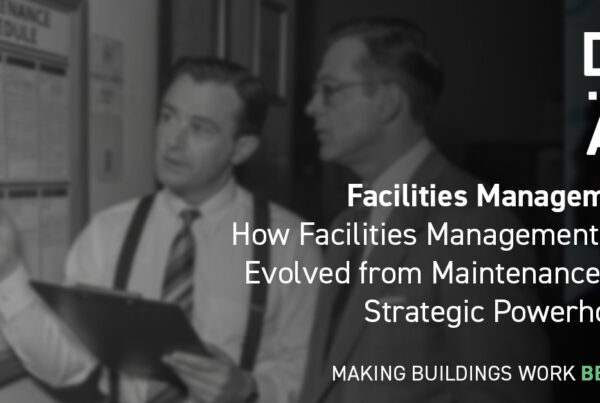
World Day for Safety and Health at Work: Revolutionising Safety and Health through AI and Digitalisation
Each year on 28 April, the world comes together to mark World Day for Safety and Health at Work, an initiative by the International Labour Organisation to promote safe, healthy, and decent work. This year, the theme “Revolutionising health and safety: the role of AI and digitalisation at work” looks at how emerging technologies are reshaping the landscape of occupational safety and health.
A Global Glimpse at Workplace Health and Safety
For millions, the workplace can be a source of risk rather than stability. Global statistics indicate that nearly 3 million workers die each year due to work-related accidents and diseases. This includes approximately 2.6 million deaths from work-related diseases and 330,000 deaths from work-related accidents. These figures were reported by the International Labour Organization (ILO) in 2023.
And it is not just traditional workplace risks we need to be thinking about. Climate change is making some jobs even more dangerous. With temperatures rising and extreme weather events becoming more common, outdoor and manual workers are increasingly exposed to heat stress, unpredictable conditions, and greater physical strain. The safety gear and training that might have been sufficient ten years ago may no longer cut it in today’s environment.
The UK Perspective: Behind the Headlines
In the UK, workplace health issues affect more people than many realise. Research from the Health and Safety Executive suggests that right now, around 1.7 million workers are living with ill health caused or made worse by their jobs. Mental health is a major part of this picture, with stress, anxiety, and depression being some of the most commonly reported conditions. This is not just a HR issue; it’s a sign that something needs to change in how we structure work and support employees.
Injuries remain a concern too. In 2023/2024, nearly half a million workers sustained non-fatal injuries that resulted in seven-day absences, which came from slips, trips or falls, handling, lifting or carrying, struck by a moving object, acts of violence, and falls from height.
Even more sobering is the fact that 138 workers died as a result of work-related accidents in the UK in 2023/2024. No job should come at the cost of a life. And when you take a step back and look at the financial impact of poor workplace health and safety, the cost becomes even clearer: based on data for 2022/2023, total costs to Britain were around £21.6bn.
The Future of Safety: AI and Digital Tools on the Front Line
The 2025 theme for World Day for Safety and Health at Work brings a new angle to the conversation: how artificial intelligence (AI) and digital tools are starting to reshape the way we protect people at work. For a long time, health and safety has relied on experience, training, and policy. But now, technology is stepping in to offer another layer of support. Not to replace people, but to work alongside them.
One of the most promising developments is the use of predictive analytics. With enough data, AI can now spot the early signs of a potential hazard before it causes harm. It might notice a pattern in machinery faults or identify when a team is under more pressure than usual, both early warnings that something could go wrong.
Alongside prediction comes real-time response. With AI-powered systems, companies can now monitor workplaces minute by minute. If a worker enters a high-risk zone or conditions suddenly change—temperature spikes, air quality drops, equipment malfunctions—the system can send an alert straight away, helping to prevent accidents before they happen.
Wearable technology is another area making big strides. Devices that track heart rate, body temperature, or environmental exposure are being used to monitor worker health throughout the day. If someone’s body temperature rises too quickly, or if they are over-exerting themselves, the device can flag it early, sometimes before the person even realises they are in trouble.
Digitalisation is also changing the structure of work itself. Automation is taking over some of the most dangerous or repetitive tasks, which means fewer people are being put in harm’s way unnecessarily. And we know that smart systems are making it easier to manage safety processes, track compliance, and keep people informed, without mountains of paperwork or delayed responses.
And then there’s remote work. It is become more common, especially through digital labour platforms, and while it can reduce physical risks, it brings its own challenges. People working from home might be safe from machinery or heavy lifting, but they can still suffer from isolation, poor ergonomics, or mental strain. Digital work may be different, but it still needs careful management to protect people’s wellbeing.
Of course, new technology brings new questions. Data privacy is one of the biggest. When wearables and AI systems are collecting sensitive information, it is vital that the data is handled responsibly and transparently. And while automation can improve safety, it is also important that workers do not feel powerless or micromanaged. Technology should support people, not control them.
The potential here is huge, but only if it is used wisely. AI and digital tools can make work safer, but they need to be introduced with care, guided by ethics, and shaped by the people who will use them.
Why It Still Matters: Keeping Health and Safety Front and Centre
Despite the progress being made, health and safety is never a one-and-done effort. Around the world, millions of people still go to work each day without the basic protections many of us take for granted. Whether it is outdated equipment, lack of proper training, or unpredictable working conditions, the risks are real, and they are everywhere.
Investing in health and safety is not just the right thing to do, it is also smart business. Safe, supported workers are more productive, more loyal, and less likely to take time off due to illness or injury. And as the global workforce continues to evolve, both in terms of technology and demographics, organisations that take this seriously will be the ones that attract and retain the best people.
Here in the UK, we have made strong progress, but there is still work to be done. Initiatives that focus on mental health, flexible working, and up-to-date training are beginning to shift the dial. But they need to be backed by action, not just policy. This means giving people the resources and support they need every day, not just during an annual awareness campaign.
What You Can Do
Whether you are an employer, a manager, or an employee, there are simple steps you can take to make your workplace safer and healthier for everyone. Here are a few ideas to start with:
- Run or attend training sessions. Understanding risks and how to respond to them is one of the easiest ways to prevent accidents.
- Speak up about hazards. If you see something that doesn’t feel right, say something. A quick word today could prevent a serious injury tomorrow.
- Support mental health. A healthy workplace is not just about physical safety. Encourage open conversations, make time to check in with colleagues, and champion well-being initiatives.
- Get involved in safety planning. From risk assessments to equipment upgrades, your voice can help shape a safer environment.
Health and safety should never be a tick-box exercise. It is something we all have a role in, every day, in every industry.
Looking Ahead
World Day for Safety and Health at Work is a moment to reflect, but more importantly, it is a reminder to act. The tools and technology now available to us can genuinely transform the way we keep people safe at work. But only if we use them thoughtfully, with people at the heart of every decision.
The future of work is digital, but it should also be human. Let’s make sure the two go hand in hand.



